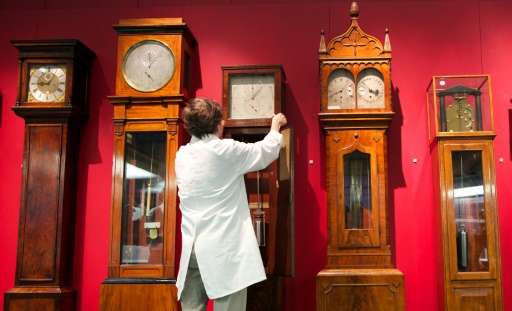Tic toc: Why pendulums swing in harmony

Almost 350 years ago, Dutch inventor and scientist Christiaan Huygens observed that two pendulum clocks hanging from a wall would synchronise their swing over time.
What causes the phenomenon has led to much scientific head-scratching over the centuries, but no consensus to date.
On Thursday, a study in the Nature journal Scientific Reports proposed a solution: the pendulums transfer energy to one another through sound pulses.
A pair of Portuguese scientists hypothesised that these pulses might move from clock to clock, perturbing the swing of the pendulums and eventually causing them to synchronise.
They developed a complex mathematical model before conducting experiments with a pair of clocks attached to a rail fixed to a wall.
The theoretical predictions and simulation matched, they found.
"We could... verify that the energy transfer is through a sound pulse," co-author Luis Melo from Lisbon University's physics department told AFP by email.
This not only solves "an old, fundamental problem," it also boosts understanding of other types of oscillators, he said.
Huygens is credited with making the first pendulum clock in 1656—the most accurate timepiece built until then, with an error margin of less than one minute a day. He later improved this to under 10 seconds.
In 1665, the scientist reported observing a strange phenomenon—two clocks hanging from the same structure would start swinging in unison, though in opposite directions.
The speed of a pendulum—a weight suspended from a string, rod or wire—is determined mainly by its length.
Attempts to explain the synchronisation have ranged from the impacts of tiny air currents to minute movements in the base on which the clocks are mounted.
© 2015 AFP




















